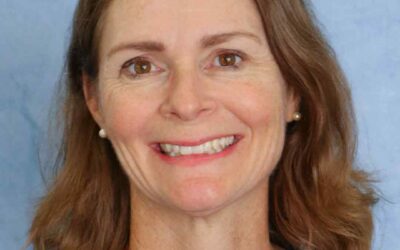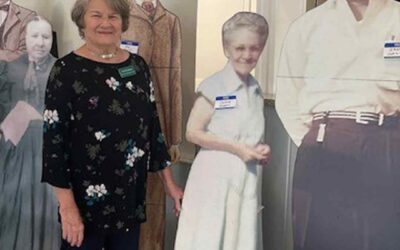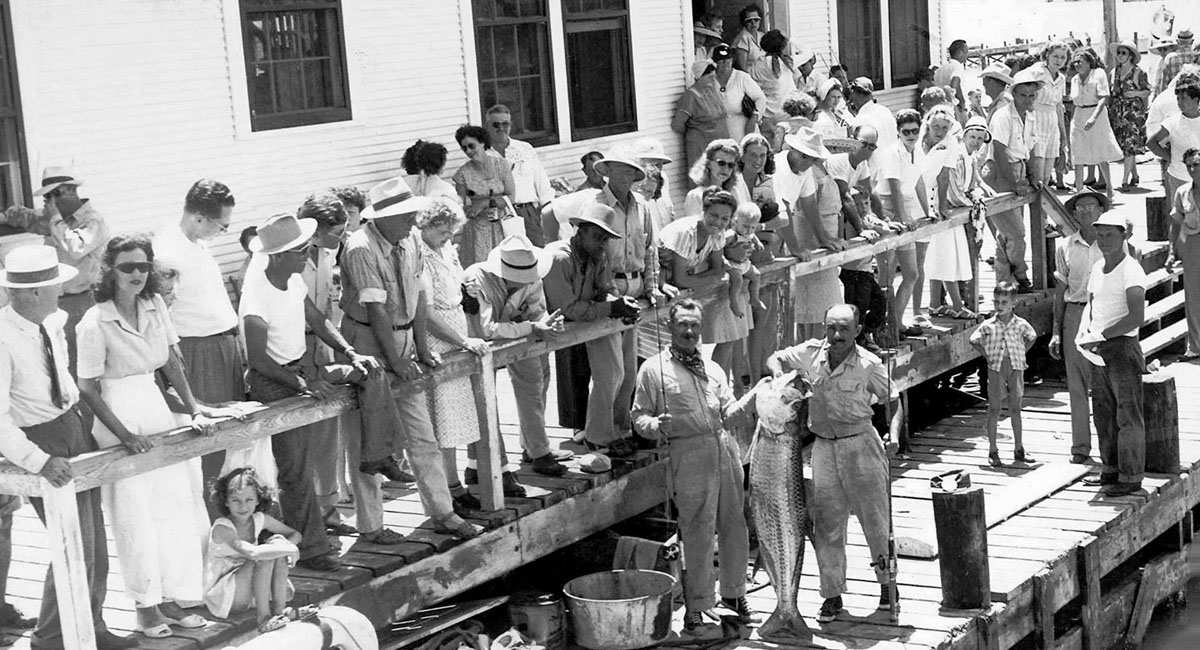
By Marcy Mathews Ward Thomas (March 15, 1992, as prepared for Terry Stinson and his mom, Virginia Corn). [The Mathews were one of the Port Aransas pioneer families.]
Sim Mathews opened the Silver King Cafe in January of 1929. In June of that year, his 8-year-old son, Beany, drowned off the front of the main wharf. Sim closed the doors and didn’t open them again until 1933. All the restaurant equipment and stock were left intact (even the food).
Sometime around 1930, the Texas Land Commissioner and a man from Austin came to Port Aransas and confronted Sim with a claim to all of the property he had bought from the Young Estate. They claimed Sim’s title to the land was invalid. Sim held a Guarantee Title from the Young Estate and threatened to fight the Land Commissioner and his friend all the way to the Supreme Court. The two men left the island and Sim never heard from them again. It was believed that the Land Commissioner and the man from Austin were working together buying and selling coastal property.
Sim reopened the Silver King in 1933 and operated it as a cafe, with fishing tackle, some marine hardware and a fishing guide chartering business included.
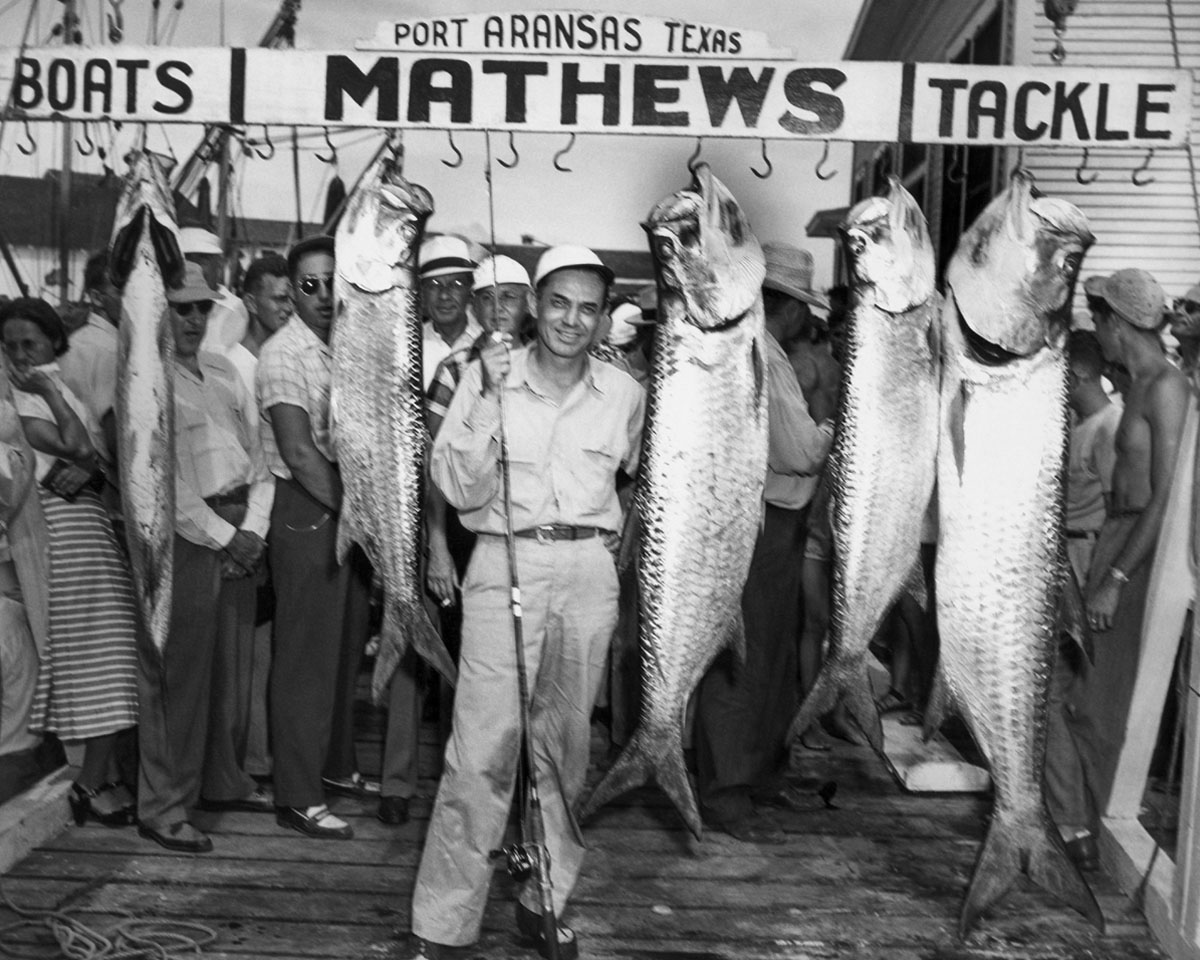
Fred Maley [Sports Editor, San Antonio Express News]
In 1934, W.W. Ousley and Sim went to the Pure Oil Co. where they negotiated for inclusion of fuel sales for the boats using the Silver King Docks. The fuel was stored in barrels in the storeroom south of the main structure. Gas was then carried in five-gallon cans across the docks and then poured into the boat’s fuel tanks, five gallons at a time.
Several members of the family worked for Sim, including Teddy Mathews, my father; Dora Moore, Sim’s sister and his brother Johnny. Teddy worked for Sim for 11 months and then took his boat out of his brother’s business and went back to Barney’s Place, which was owned and operated by Barney and Marie Farley. Dora worked for Sim, as his cook in the Silver King, until about 1938. Johnny also worked for Sim as a guide and construction expert.
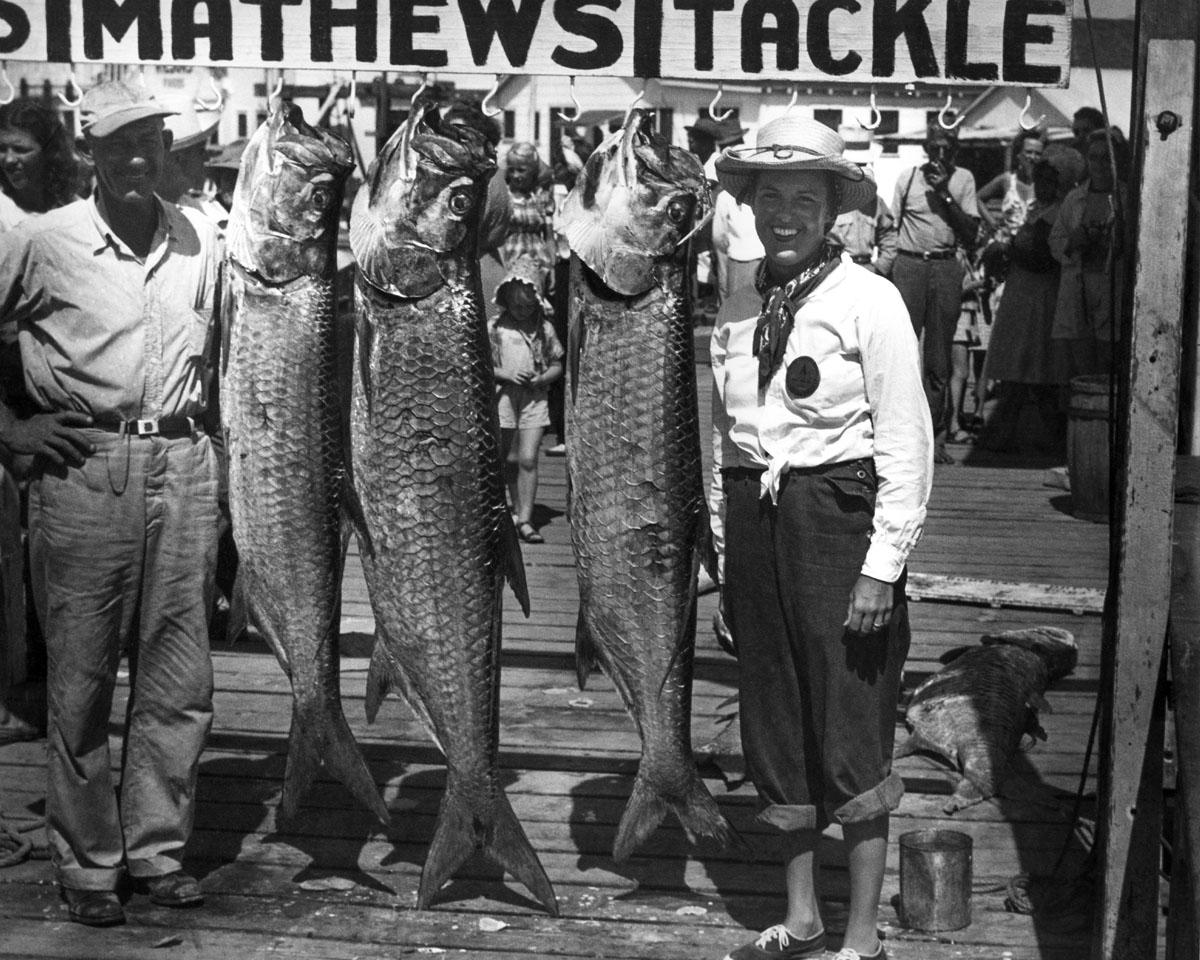
This photo is dated 1948.
In 1933, Port Aransas was struck by a hurricane, which did a good bit of damage to the island, including damage to the Municipal Dock on Sim’s property. At that time, Jim Sims was City Commissioner and J. Hampton was City Judge. These two men hired Fred Farley, a friend of Sims, to tear down the Municipal Dock. Sim stopped Fred and began arguing with Jim Sims and Mr. Hampton. Sim finally hit J. Hampton, but could not catch Jim Sims. Sim argued that the dock’s construction on that site was never legal and that the dock was his property because it was located on land, which he did legally own. Sim’s attorney, Judge Sutherland advised Sim to build a fence at mean low tide, and shoot anyone who trespassed with intent to damage or destroy the dock.
Another interesting thing that happened after the 1933 hurricane occurred when the Dredge Texas cleared the channel between Mustang and St. Joseph Islands. he spoil was pumped onto the area between today’s Tortuga Flats Restaurant and Fisherman’s Wharf. Sim would not allow any of the spoil to be pumped on to his property.
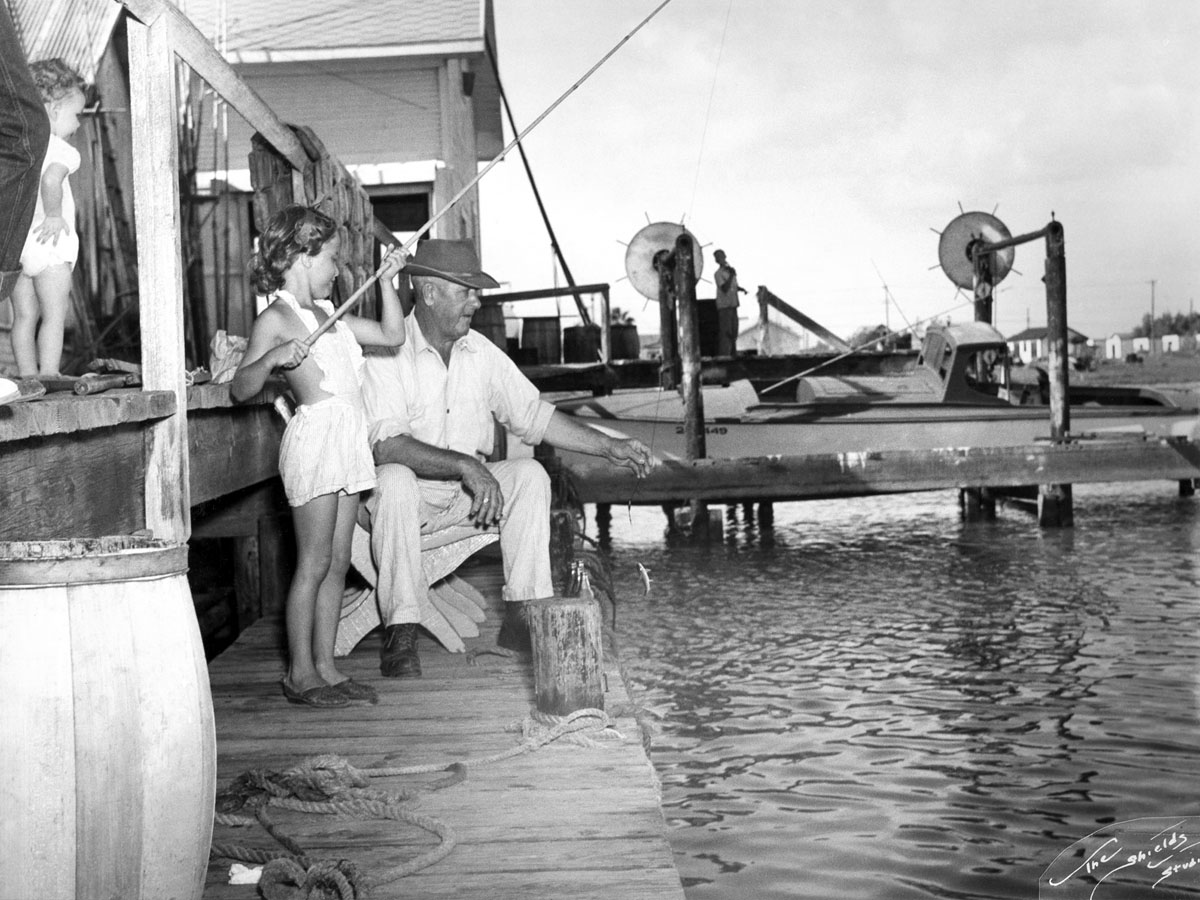
During the late 1920s to late 1930s Barney Farley owned and managed a fishing tackle and charter business from Barney’s Place. This Place was located at approximately the site where Fisherman’s Wharf is today. Barney had leased this waterfront property from the Aransas Holding Company. He constructed his building and ran his business until sometime in 1938. In 1938, Jim Ellis’ claim to riparian rights to the property on which Barney’s Place stood was upheld in court. Barney lost his lease.
Because Barney had run a successful and widely known business, Sim decided to seek a partnership with him. Sometime in 1938, Barney moved into the Silver King, and renamed it Barney’s Place.
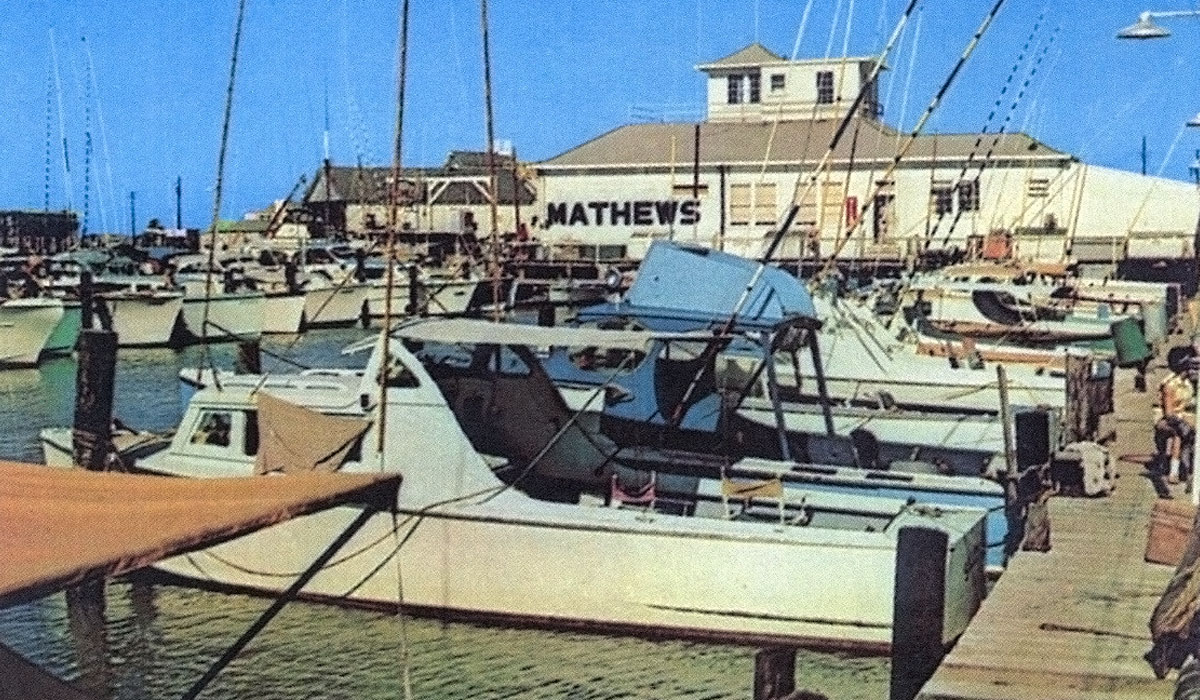
In 1937, President Franklin D. Roosevelt came to Port Aransas on a fishing trip. Barney Farley had made all of the arrangements for guides, boats, etc. Don Farley and Teddy Mathews were the boatmen Barney chose to be the President’s guides. While in Port Aransas, the President stayed aboard his yacht. He came into the dock on Teddy’s boat, but did not come on shore.
Barney had told everyone that President Roosevelt had told him that if he could ever do anything for him, to let him know. Sim was in the process of securing the necessary permits to enlarge and improve the wharves and increase the number of boat slips extending westward. There was much local opposition to Sim’s plans. He had already been granted permits from the U.S. Engineers in Corpus Christi, Galveston and New Orleans, all of which was unknown to the local petitioners who were fighting to keep the dock on the westward side of the Silver King a Municipal Dock. Sim prevailed upon Marie Farley, Barney’s wife, to write to the President asking his help in obtaining a Federal permit and enclosing his plans for expansion of the docks and Slips. Barney’s name was signed to the letter. In a matter of days, the permit was granted by way of a telegram from the President saying necessary papers were forthcoming.
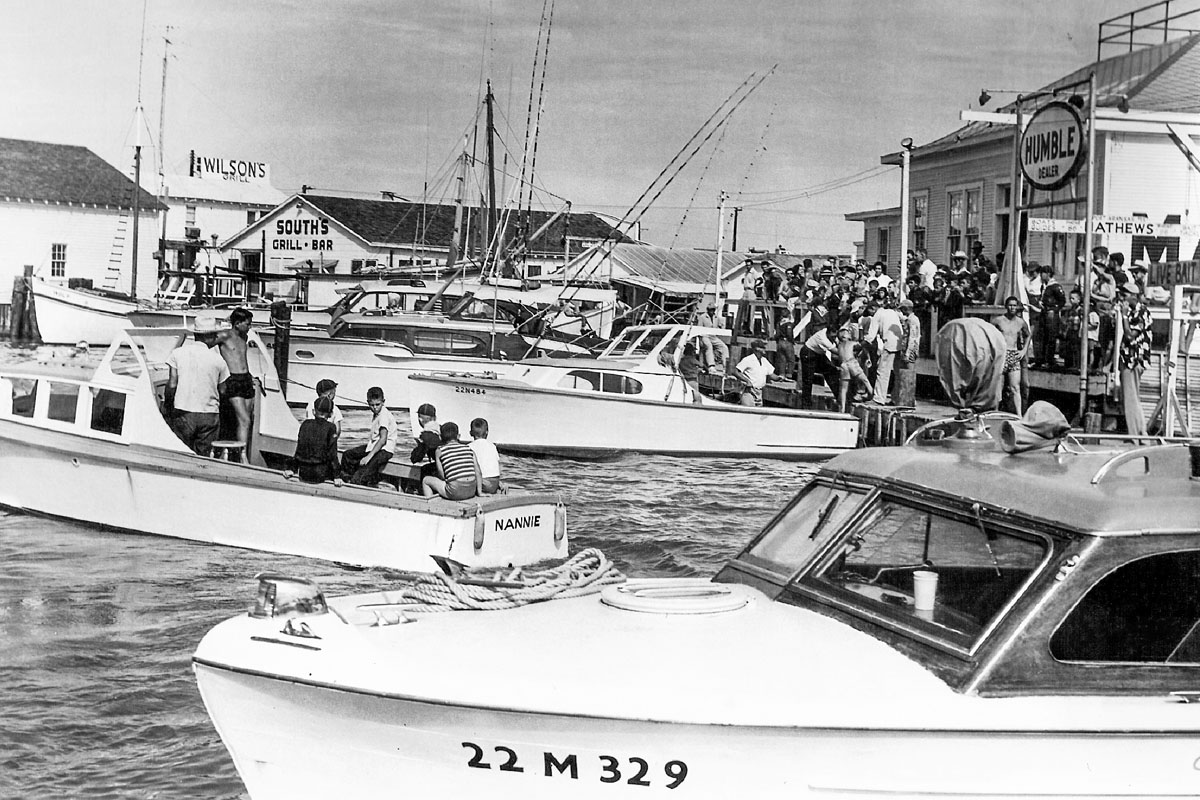
Barney Farley and Sim Mathews were in business together for about one year.
When their partnership was dissolved, Sim changed the name again, this time to Mathews Place. For a while, the business was managed for Sim by Paul Olsen. From 1939 until Sim’s death in 1947, Dora Mathews Moore and her husband Bill managed Mathews Place for $200.00/monthly. They also owned half of the stock, which included fishing tackle and hardware. After Sim’s death in 1947 Bill and Dora continued to manage Mathews Place for Vera, Sim’s widow. The Moores and Vera split the profits. This arrangement continued until the death of Bill and Dora’s son Malcolm in 1956.
Between 1956 and 1961, Mathews Place was run by Edwin Mathews and Woody Ousley. In 1961, Johnny Mathews rebuilt the docks for Edwin.
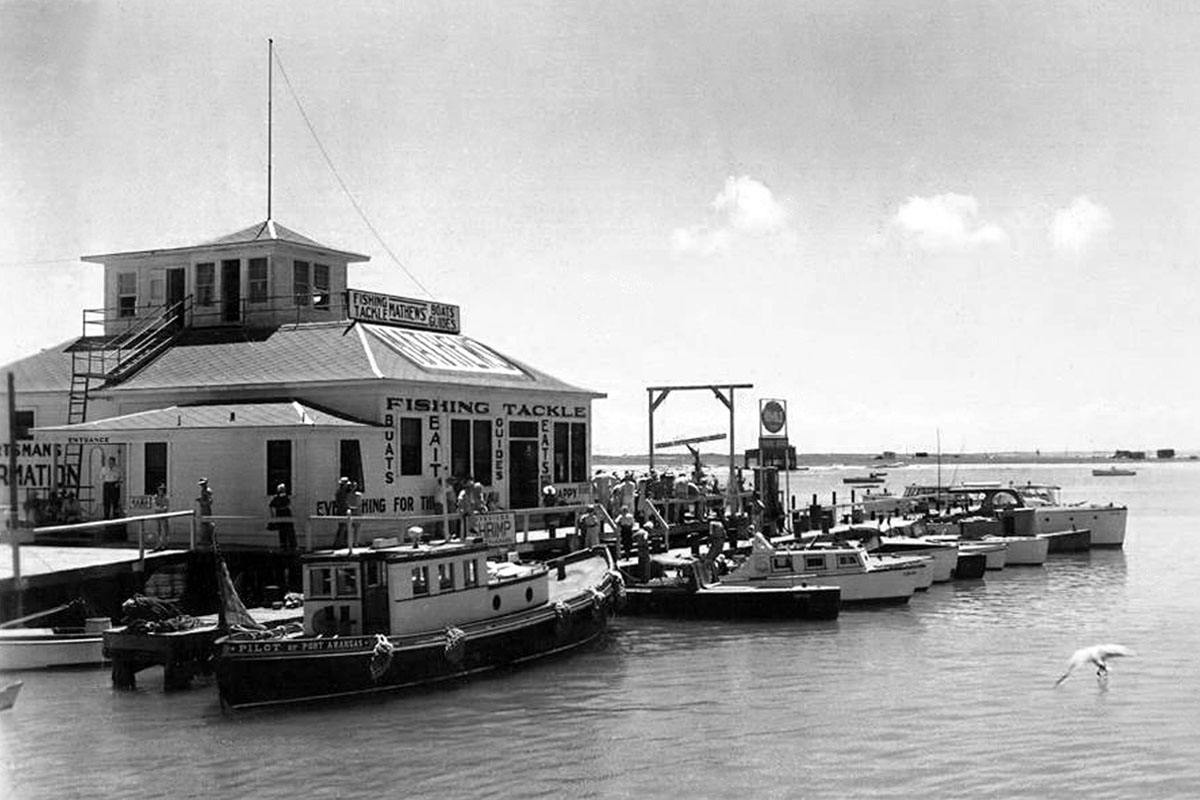
During the years between 1933 and 1963, the Port Aransas pilots Association’s office was located in a small structure on top of Mathews Place. The office had a good view of all water traffic coming in from the Gulf of Mexico, passing by Port Aransas and going on into Corpus Christi via the channel. The office was reached by climbing a metal ladder leading up the side of the building with steps continuing across the roof to the office.
In 1963 Vera Mathews sold Mathews Place to a Mr. Plumlee. Plumlee added a restaurant over the water and on top of the docks Johnnie had rebuilt in 1961. Johnny advised Plumlee that the docks were not suitable for the foundation of a heavy structure.
In 1970, Hurricane Celia blew the restaurant away but left the original building, which Sim Mathews had built out of cypress, standing little harmed.
Before Hurricane Celia, Mr. Plumlee sold Mathews Place to Frank Zock for his son-in-law Bill Powers. The Boatmen of Port Aransas did not like the business methods of Bill Powers, so they moved en masse to the Enco Marina.
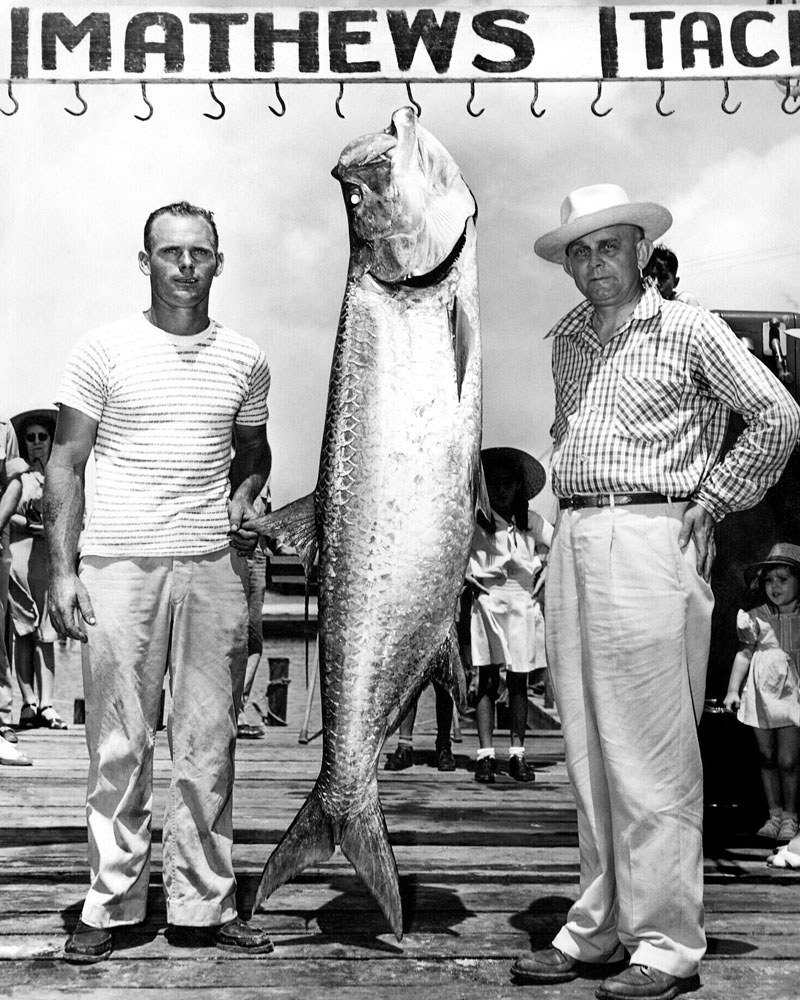
Rusty Dreyer (left) and Lamar Freeman (right).


